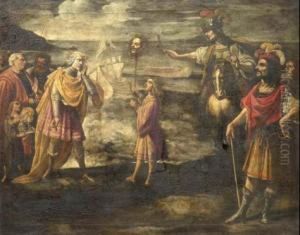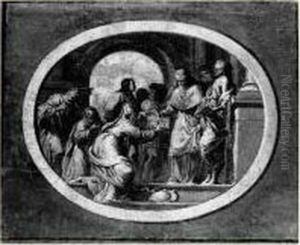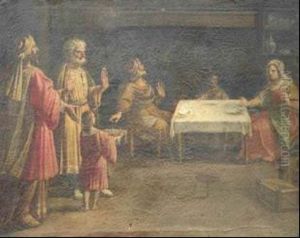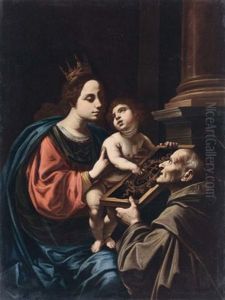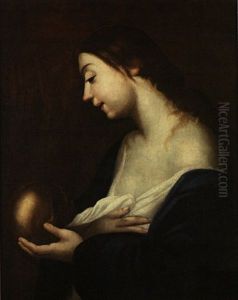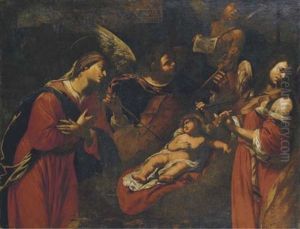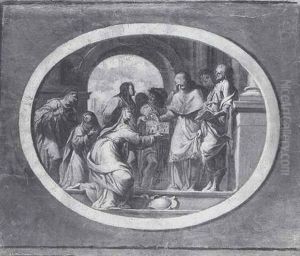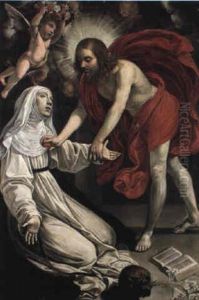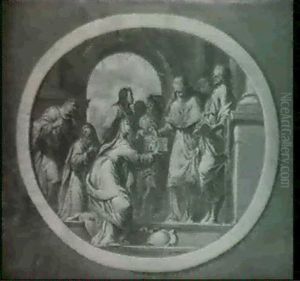Domenico Manetti Paintings
Domenico Manetti was an Italian painter of the Baroque period, born in Siena in 1609. He was part of a family of artists; his father, Rutilio Manetti, was also a painter and likely played an influential role in Domenico's artistic upbringing. Not much is documented regarding his early life or training, but it's presumed that he received his initial education in the arts from his father.
Domenico's style was heavily influenced by the Baroque movement, which was characterized by dramatic expression, rich colors, and a dynamic interplay of light and shadow. The Baroque style was a reflection of the Counter-Reformation's call for art that evoked emotional involvement and spiritual intensity. Manetti's works typically featured religious subject matter, following the trend of the time, which focused on biblical scenes and figures of saints.
Throughout his career, Manetti worked on various commissions for churches and patrons in Siena and its surroundings. His paintings often depicted scenes from the life of Christ and the Virgin Mary, as well as hagiographies of saints, imbued with the typical Baroque pathos and theatricality.
Domenico Manetti's contributions to the art world remained relatively overshadowed by the fame of his contemporaries and even by his father, Rutilio, who was among the most prominent artists in Siena during his time. However, Domenico still managed to carve out a place for himself within the Sienese artistic community. His works can be found in several churches and collections, where they continue to be appreciated for their emotive qualities and craftsmanship.
Manetti's death in 1663 marked the end of his artistic journey. His legacy is preserved in the works that survive him, serving as a testament to the Manetti family's role in the propagation of Baroque art in Siena. The exact circumstances of his death and the location of his final resting place are not well-documented, which is not uncommon for artists of that era outside the highest echelons of fame.
